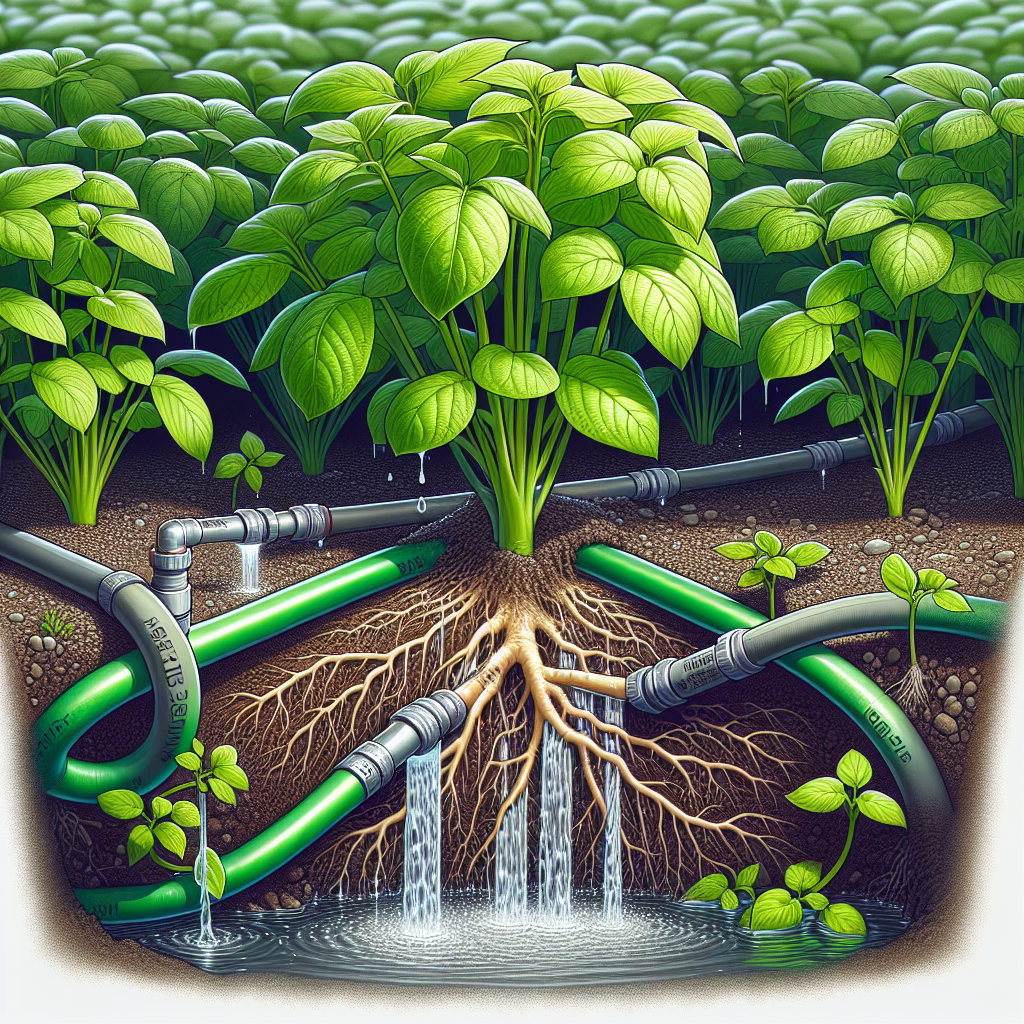Root rot is a common problem that many gardeners face when using a slow-drip irrigation system. This issue occurs when the roots of plants become waterlogged, leading to a decrease in oxygen levels and ultimately causing them to rot. However, there are several steps that can be taken to prevent root rot when implementing a slow-drip system.
1. Use well-draining soil: One of the most important factors in preventing root rot is using well-draining soil. This allows excess water to drain away from the roots, reducing the risk of waterlogging. If you are unsure about the drainage capabilities of your soil, you can add compost or perlite to improve its structure.
2. Choose the right plants: Some plants are more susceptible to root rot than others. When implementing a slow-drip system, it is important to choose plants that are less likely to develop this issue. Plants with shallow root systems, such as succulents and cacti, are less prone to root rot compared to those with deeper roots.
3. Monitor soil moisture levels: It is essential to monitor the moisture levels in the soil regularly when using a slow-drip system. Overwatering can lead to root rot, so it is important to ensure that the soil is not staying too wet for extended periods of time. You can use a moisture meter or simply check the soil with your finger to determine if it is time for another watering.
4. Adjust watering schedules: Depending on factors such as plant type, climate, and soil drainage, you may need to adjust your watering schedule when using a slow-drip system. It is important not to water too frequently, as this can lead to waterlogging and ultimately root rot. Instead, allow the top layer of soil to dry out slightly between watering sessions.
5. Position drip emitters strategically: When setting up your slow-drip system, make sure that drip emitters are positioned correctly around each plant’s root zone. Placing emitters too close together can lead to overwatering in certain areas and increase the risk of root rot. Aim for even coverage and adjust emitter placement as needed based on individual plant requirements.
6. Consider adding a timer: To further prevent overwatering and root rot, consider adding a timer to your slow-drip system. This will allow you to set specific watering intervals and durations based on plant needs and environmental conditions. A timer can help maintain consistent moisture levels in the soil without risking excessive water accumulation.
7. Mulch around plants: Adding a layer of mulch around plants can help retain moisture in the soil while also improving drainage. Mulch acts as a barrier between the surface of the soil and the air, reducing evaporation and keeping roots cool and moist. Additionally, mulch helps prevent weed growth and protects against temperature fluctuations that can stress plants and increase susceptibility to root rot.
8. Prune damaged roots: If you notice signs of root rot in your plants, such as wilting leaves or discoloration, take action immediately by pruning away any affected roots with sterile pruners or scissors. Removing damaged roots can help prevent further spread of disease and encourage healthy new growth.
In conclusion, preventing root rot when implementing a slow-drip irrigation system requires attention to detail and regular monitoring of plant health and soil conditions. By following these tips and taking proactive measures, you can help ensure that your plants thrive without falling victim to this common issue.
Implementing proper drainage practices, selecting suitable plants for your environment, monitoring moisture levels closely adjusting watering schedules accordingly will all contribute towards preventing root rot in your garden while using a slow-drip system.













